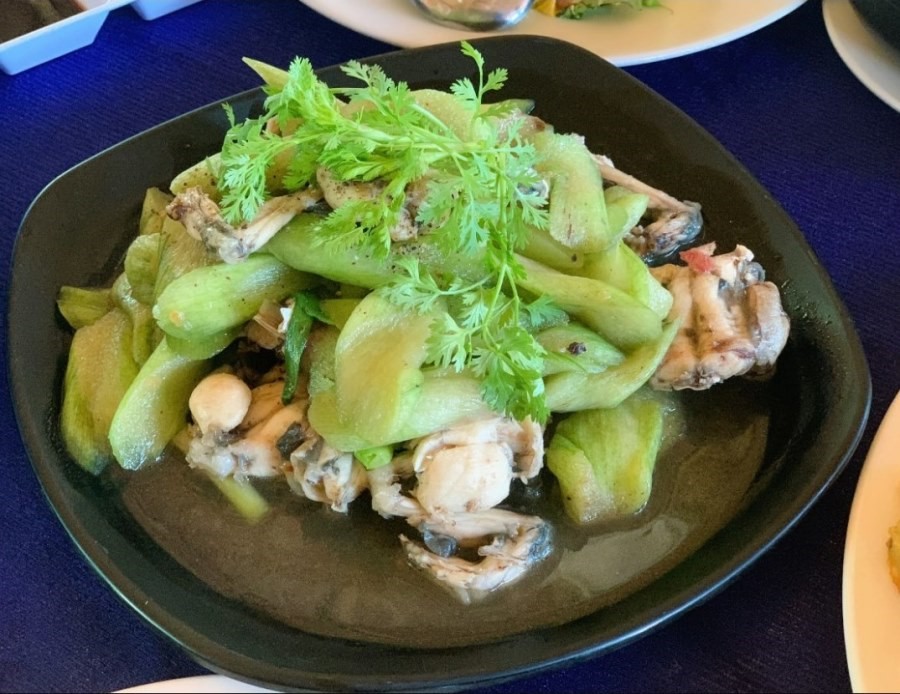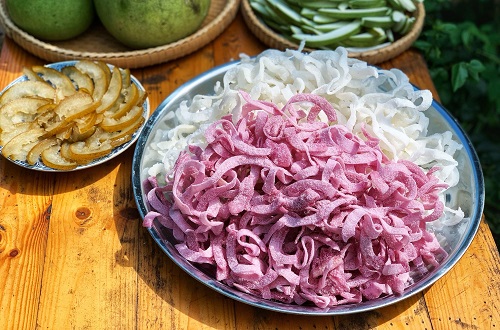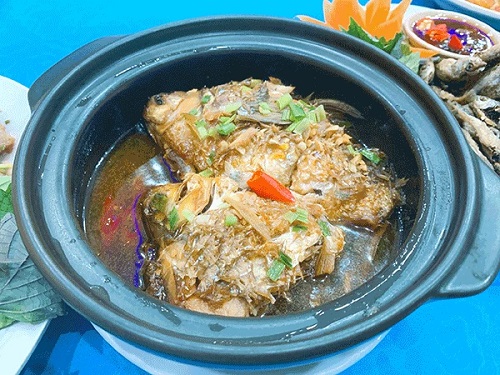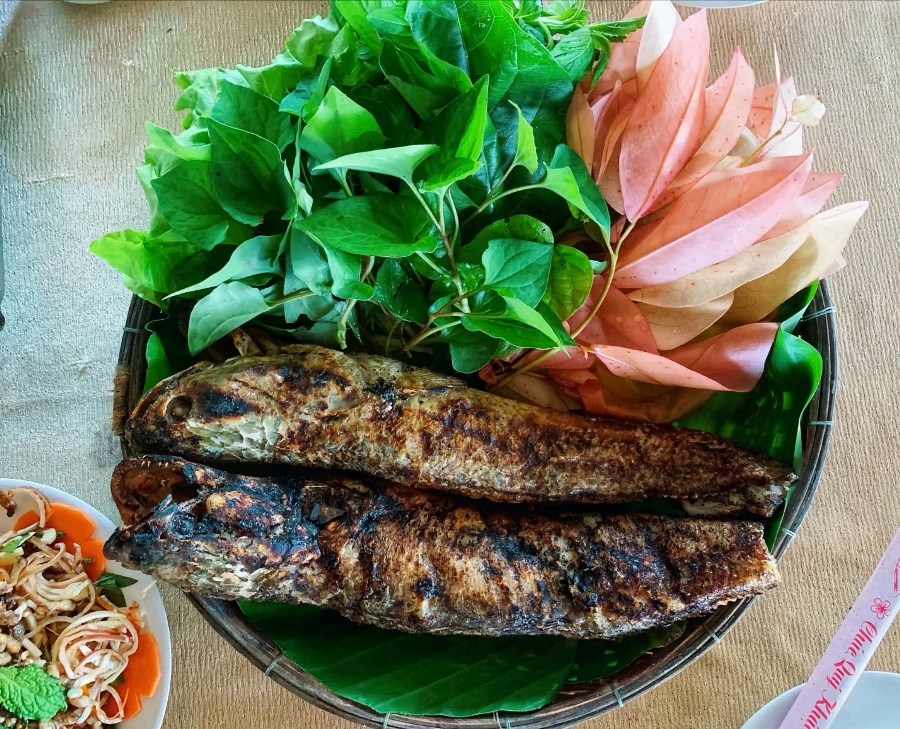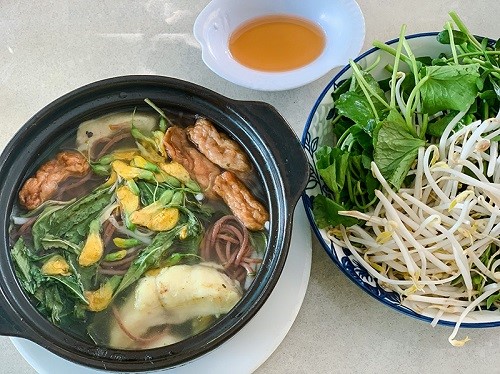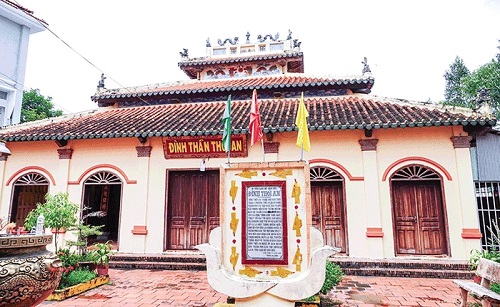
Like many other communal houses in Can Tho in particular and the Mekong Delta in general, Thoi An Communal House was established during the early reclamation period of the southern region under the Nguyen Dynasty. According to documents from the Monument Management Board, during the reign of Emperor Gia Long (1802–1820), several villages such as Tan An, Thoi Thuan, Binh Thuy, and Thoi An emerged across the vast area now known as Can Tho. Along with land expansion, administrative organization, bridge construction, and market establishment, building communal houses became vital for Vietnamese settlers.
The communal house served as a place of worship for deities conferred titles by the king and individuals who made significant contributions to defending the country and expanding its territory. It also functioned as the administrative center of the village, a lodging place for travelers, and a venue for village meetings during festivals. Given these essential roles, each village built its own communal house. The scale of the house depended on the community's economic capacity and population size. According to village elders, in the early 19th century, settlers in the region built a modest thatched communal house on a high mound in Thoi Thuan hamlet, Thoi An commune, to worship local deities. This original structure has been maintained and later renovated with more durable materials.
As life became more stable and prosperous, locals placed greater emphasis on spiritual life. They submitted a petition to the local authorities and sent elders aboard boats to Hue to request official recognition of Thoi An Communal House from the imperial court. This request aligned with the Nguyen Dynasty’s territorial expansion and pacification policy. In 1852, Emperor Tu Duc issued a royal decree conferring the title of Bon Canh Thanh Hoang (Local Tutelary Deity) upon the communal house. Following this royal recognition, villagers convened to select a new site and pooled resources to construct a more appropriate and dignified structure.
Thoi An Communal House was built in the “Nhất” (一) character layout, facing east. In front of the main hall stands the Vo Ca (martial arts and opera stage), which is used for festivities and traditional performances, especially hat boi (classical Vietnamese opera) during the Ky Yen Festival. Positioned at the center of the Vo Ca area are two shrines: one to the right (facing outward) dedicated to Son Quan (Mountain Deity), and one to the left honoring the Five Elements Deity. Slightly to the left of the Vo Ca is the altar of Than Nong (Agricultural Deity), used in ritual offerings during annual festivals.
“Thoi An Communal House stands out amidst the tranquil countryside with its grand scale and distinctive tiled roof system. The roof is divided into three sections, each comprising three layered tiers. The central section has three roof clusters, while the side sections have two tiers. The roof is covered with tube tiles, and in some areas, replaced with yin-yang tiles during later restorations. Green-glazed ridge caps adorn the roof edges. At the ridge ends, twin dragons face the Taiji symbol; instead of the commonly curved edges, the eaves here are uniquely styled. Ceramic statues, such as carp transforming into dragons and qilin (mythical creatures), add color and vibrancy. The spaces between the roof layers feature hand-painted floral patterns, birds, legends, and poems—now faded with time. The entire roof structure is supported by a complex beam system and six rows of columns, with ten columns in each row. In 1945, a brick pillar was added between the third and fourth row to reinforce the roof. The outer columns are made of large bricks with lime plaster, decorated in Corinthian-style motifs, while the inner columns are 40 cm-wide wooden logs.”
An expansive courtyard stretches between the Vo Ca and the main hall. Crossing this courtyard leads to the front façade of the communal house, with five solid wooden doors. Behind these doors lies the sacred worship area. The interior is divided into three compartments: the Front Hall, the Central Hall, and the Main Hall.
The Front Hall, immediately past the main entrance, features an altar dedicated to President Ho Chi Minh at its center. On either side are two sets of tables and chairs for welcoming guests. Nearby stands an altar for former officials and scholars.
Proceeding inward is the Central Hall, where an altar honors national hero Nguyen Trung Truc. The inscription “Thuong Dang Dai Than” (Most Revered Great Lord) reflects locals' deep reverence for this resistance leader who fought against French colonialists.

The Main Hall, the most sacred space in Thoi An Communal House
At the heart of the complex lies the Main Hall, the most sacred space in the communal house. Here stands the altar of the Bon Canh Thanh Hoang, the tutelary deity who protects and oversees the village’s welfare. The central altar bears the character “Thần” (Deity) within an intricately carved shrine. In front of this altar are two rows of ritual weapons, symbolizing the deity’s authority. To the left (from the entrance) is the altar of the Left Assistants (Tả Ban), and to the right, the Right Assistants (Hữu Ban). Numerous horizontal lacquered boards, parallel verses, carved decorations, and ceremonial parasols enhance the spiritual atmosphere and solemnity of the space. Additional side altars are also arranged to venerate other deities.
Annually, aside from seasonal offerings, the most significant events at Thoi An Communal House are the Ky Yen Thuong Dien Festival, held on the 14th, 15th, and 16th of the 4th lunar month, and the Ky Yen Ha Dien Festival on the exact dates in the 12th lunar month. During these festivals, the temple’s ceremonial board conducts major rites such as the Túc Yết (Preliminary Offering), Chánh Tế (Main Offering), Than Nong (Agricultural Offering), and ceremonies for receiving and returning the royal decree.
Beyond its cultural and architectural significance, during the nine-year resistance war against French colonialism, Thoi An Communal House also served as the temporary headquarters of the O Mon District Provisional Resistance Administrative Committee. Despite historical upheavals, the communal house has endured, retaining its traditional Vietnamese architecture. In recognition of its historical importance, Thoi An Communal House was designated a Historical and Cultural Relic by the Can Tho City People's Committee in 2004.
Source: Cantho News - Translated by Hoang Dat







